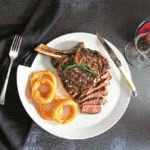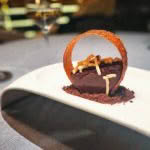Exploring Indonesia and Australia from the suite life of a luxury cruise ship

Lotus flowers grow in water troughs in front of a miniature replica of Borobudur temple, Java, the largest Buddhist temple in the world. Lotus grow in muddy water, but their flowers are bright and unblemished, which is why they are a symbol of purity and enlightenment in Buddhism.
A couple explores the rugged beauty of Indonesia and Australia’s Northern Territory while enjoying the suite life on board a luxury cruise ship.
Words: Emma Rawson Photos: Andrew Long
Waking up has never been my favourite part of the day, but travelling with Regent Seven Seas Cruises has become an exception to a lifelong rule. Opening the curtains of our suite on Seven Seas Explorer each morning is like unwrapping a Christmas present, with each new outlook offering a fresh adventure. Yesterday’s bright lights and fireworks of Port of Benoa near Bali’s buzzing Kuta Beach have been replaced by lime-green trees and the morning-misty mountains of Celukan Bawang on Bali’s northern coast.
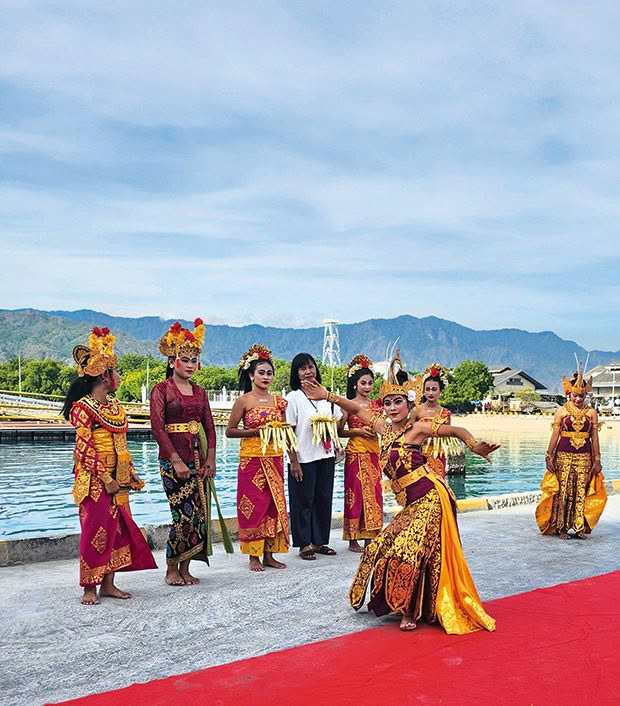
Celukan Bawang port in the north of Bali rolled out the red carpet for the guests disembarking from Seven Seas Explorer, who were greeted with a traditional dance.
While I slept, the whipped cream wakes of jet skis (and their shrieking backpacker riders) of Benoa Harbour have morphed into gentle ripples from jukung outriggers belonging to fishermen. Their buckets of fish tell me their day started hours ago, but my adventures on board this cruise liner are just beginning.
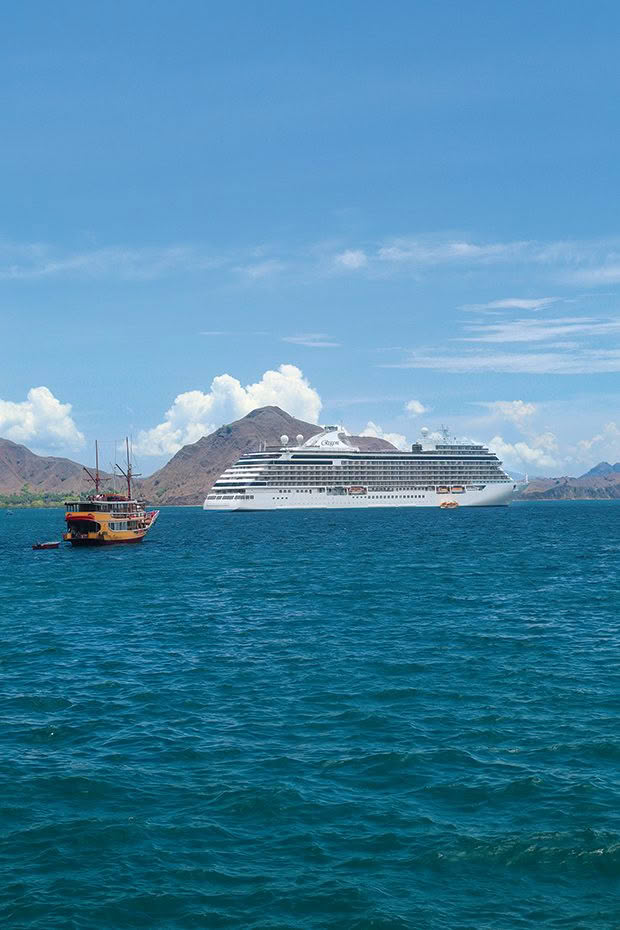
An Indonesian tour boat is dwarfed by Seven Seas Explorer in the harbour of Komodo National Park in Indonesia.
Cruising on Seven Seas Explorer is an experience of beautiful and sometimes jolting contrasts. With its 473 chandeliers, including a cerulean-blue Murano glass ceiling in the Compass Rose dining room, artwork-lined halls and 4273 square metres of marble, the ship’s finery amplifies the unpolished beauty of our destinations: Bali, Lombok, Komodo National Park, Darwin.
The ship’s name is apt — the 750 guests are keen to explore the shores. But on board, there’s comfort, safety and the blissful convenience of not having to haul suitcases from destination to destination (particularly handy for those with dodgy ankles and knees).
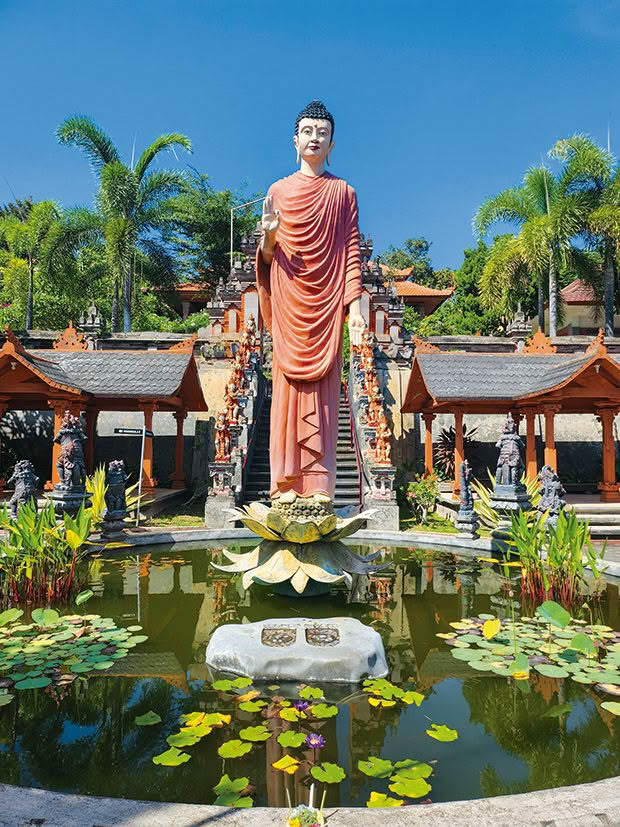
The five-metre-high statue is in the abhayamudrā pose, symbolising protection, peace and the dispelling of fear.
It’s only 7am in Bali, and the temperature on the top deck has already hit 29 degrees Celsius, and the humidity is like a hot bath while fully dressed. I had fancied the idea of eating breakfast outside while watching the fishing boats sail by, but retreating to the crisp air of La Veranda’s restaurant’s interior is a must. Cool, calm and collected, we fill our plates with deliciousness from the breakfast buffet — why, hello there, pain au chocolat — before mentally preparing for our day of adventuring.
Planning, it turns out, is unnecessary aboard the all-inclusive Seven Seas Explorer as shore excursions are included in the fare cost along with all food and alcohol.
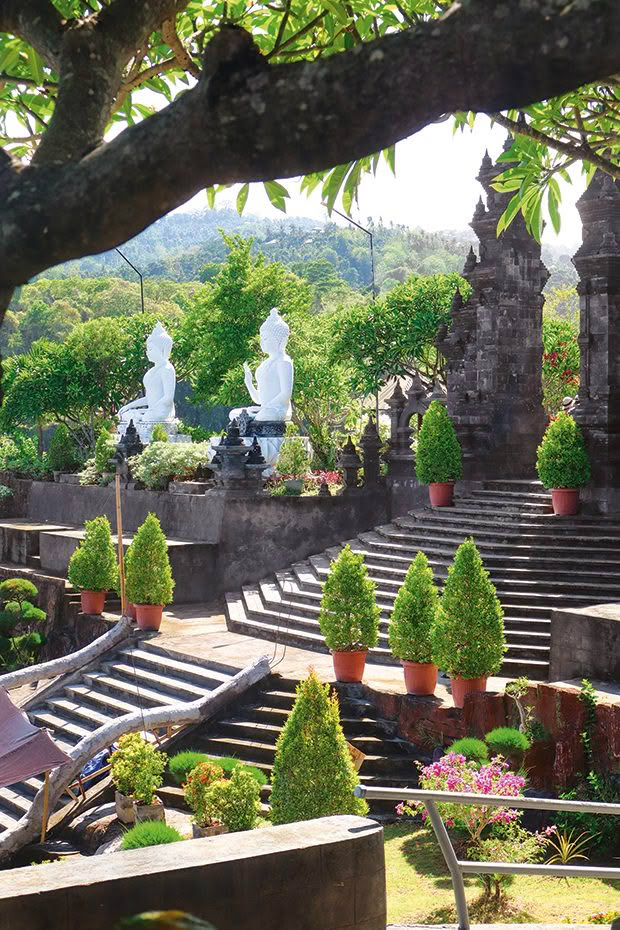
The temple features traditional Balinese iconography as well as symbols of Buddhism and is frequented by many Hindu believers.
Andrew and I walk the gangplank, and our group of 10 board a bus headed to Banjar, a village hidden in the hills north of the tourist hotspot of Lovina. We pass verdant rice paddies and fields of marigolds before our bus grinds to a halt. The road is blocked for an exuberantly loud funeral procession as dozens of men dressed in white carry the body of a loved one to be cremated at a nearby Hindu temple.
The vibrations from the cymbals, bells, drums and car honks seem to circulate the dust — the louder the ceremony, the more respectful the send-off is to the dearly departed, our guide Surya tells us.
Balinese Hinduism is the main religion of Bali, but Buddhism, Hinduism and animism dovetail into one another here. It’s not a coincidence that when we arrive at Brahma Vihara Arama Buddhist Monastery, we run into a bride and groom quietly having their photo taken next to the golden Stupa bell on the morning of their wedding day.
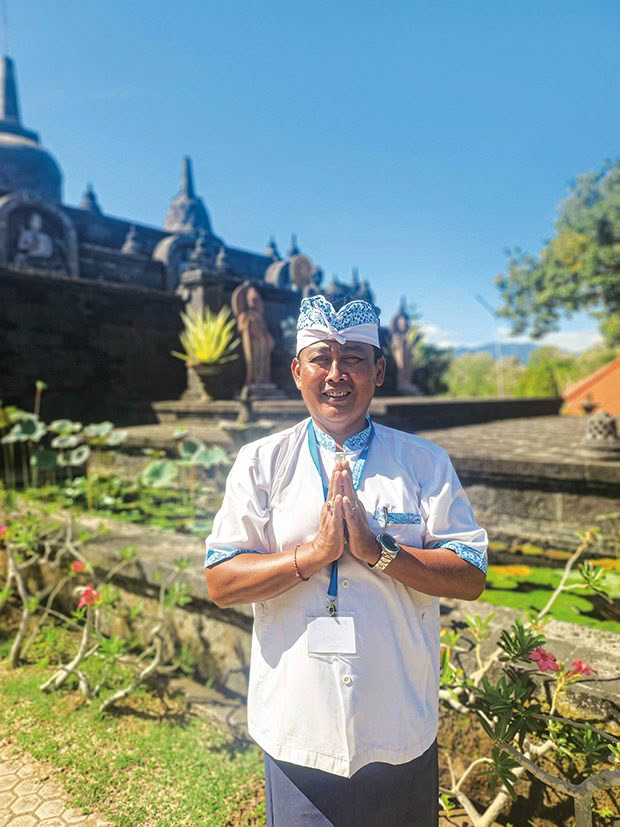
Our guide Surya wears a traditional udeng, which is an expression of “ngiket manah”, meaning “control of the mind” in Balinese Hinduism.
“It’s a lucky day on the Balinese calendar for a wedding or a funeral,” says Surya. We don sarongs, glistening with gold thread, to cover our legs and climb the many steps in the cliffside place of worship, the largest Buddhist temple in Bali. The steep steps that ascend towards a giant Buddha statue are each marked with aspects from the eightfold path of enlightenment. At the top, we’re greeted by gilded rooms depicting the early life of Prince Siddhartha Gautama, who found enlightenment and became Buddha by meditating under a bodhi tree for 49 days. Our spiritual awakening is not on the cards today, but we do leave the temple feeling soothed and at peace.
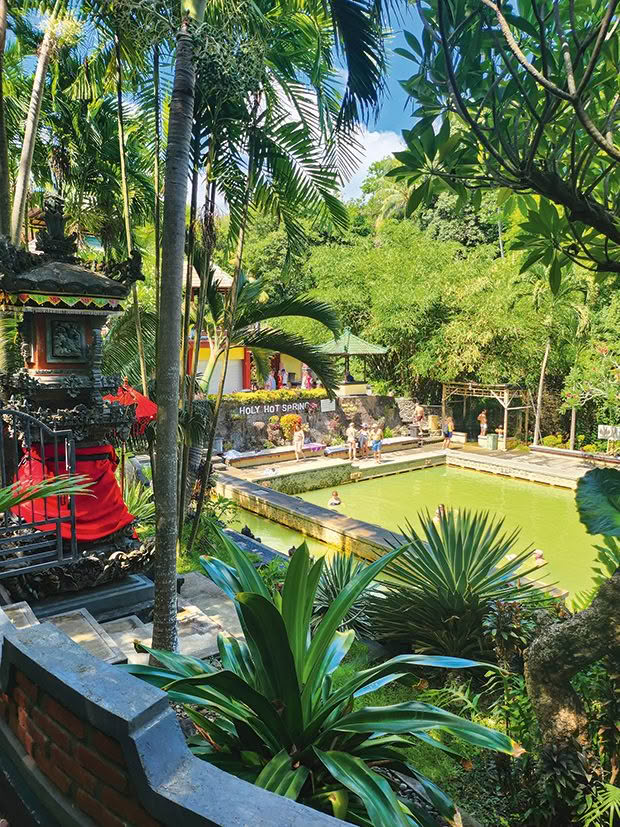
Brahma Vihara Arama monastery in Banjar is Bali’s largest Buddhist temple, with meditation rooms available for visitors. The temple’s original location was up the road — at the current location of Banjar Holy Hot Springs, which these days attracts tourists interested in the potential healing powers of the water, which contains 26 per cent sulphur.
We venture further inland towards Banjar Hot Springs. Eight dragon-statue spouts fill three bathing pools with spring water at this centuries-old thermal spring, where the water is a cloudy lime green due to its sulphur content. I’m yet to notice the alleged beautifying qualities of the baths, but the tepid waters are a blissful respite from the heat.
The next day, we tour Singaraja, Bali’s former capital. Dutch colonial influence is still evident in the homes, with terracotta roof tiles and crumbling shipping warehouses that once contained vanilla, tobacco and spice. Modern Indonesia is whacked haphazardly on the side of Dutch East Indies architecture with corrugated iron lean-tos, sandstone Hindu shrines and yellowing neon lights.
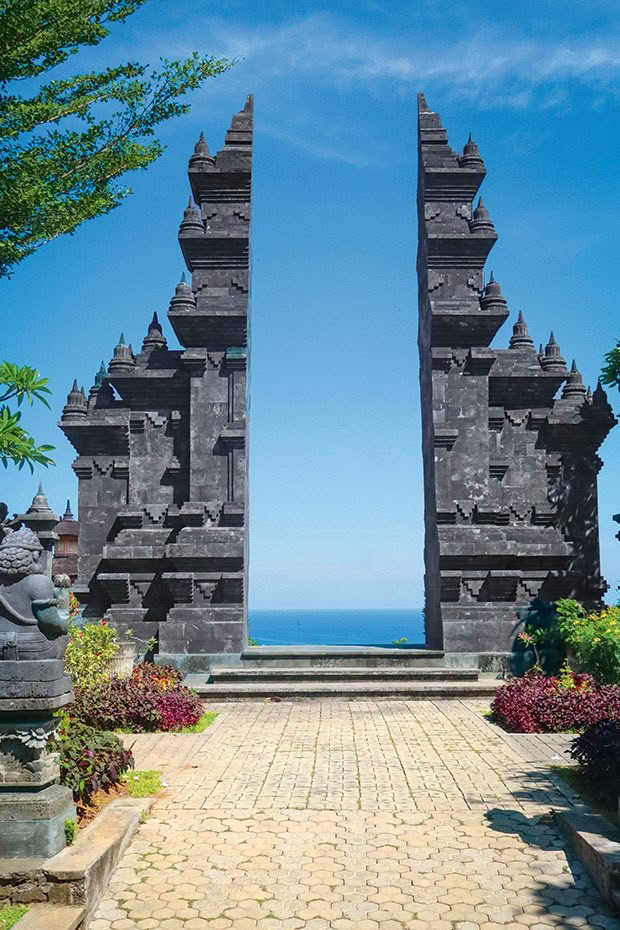
The impressive gates of the steep terraced temple overlook Lovina Beach, famed for the dolphins that play in its waters each morning.
We explore the Royal Palace Singaraja, an elegant but surprisingly modest colonial building. Then, as if to deliberately upend our senses, we visit the local market where, in the heat, a cacophony of smells, pig heads, chicken torsos, fish and ripe fruit is intense.
Visiting Banjar and Singaraja has been wild, but I must admit feeling relieved when returning to Seven Seas Explorer. As Celukan Bawang fades into the sunset, we toast to our adventures over an Argentinian red at the ship’s fine-dining steakhouse Prime 7. Our hearts and stomachs are full.
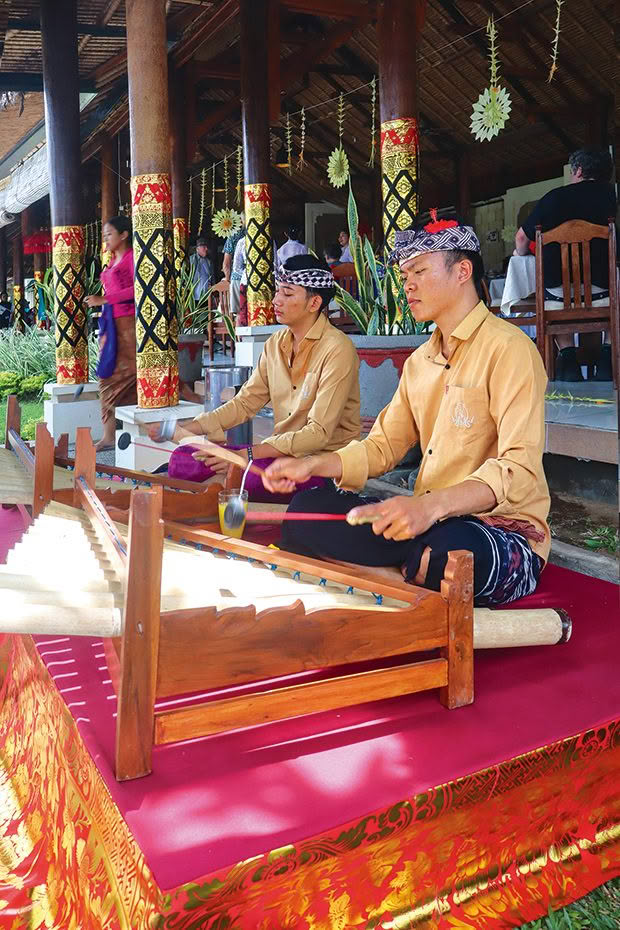
It takes a lot of coordination and concentration to become a skilled rindik player.
As the sun rises the next day, a hauntingly beautiful voice reciting a Muslim call to prayer (adhan) over a loudspeaker signals our arrival in Gili Mas, Lombok. Adhan means “to listen”, and the call reminds followers to leave worldly matters behind. When we walk the gangplank shortly later, it’s with an air of reflection. Today, we’ve decided to explore Lombok on our own, taking the ship’s complimentary shuttle into town before making our way to the Gili Islands. Our driver, Odi, takes us through the streets of Mataram, where scooters swerve around donkey-drawn taxis and streetside merchants selling durians and scaly-looking salak (snake fruit).
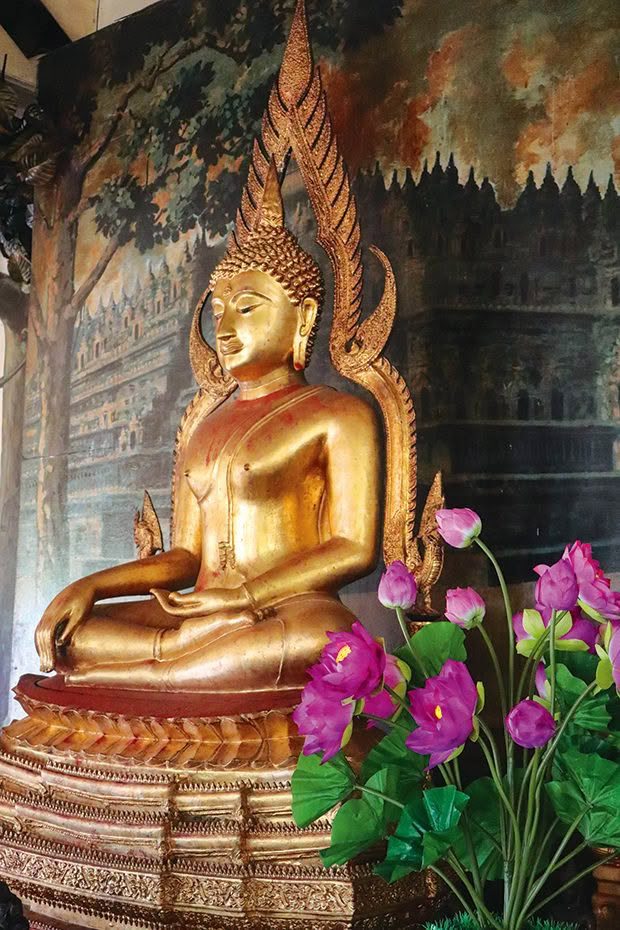
We board a private boat to take us to the Gili Islands, famed for their white sands and aquatic life. The Nest underwater sculpture by British artist Jason deCaires Taylor off the shore of Gili Meno was commissioned by Bask, a local eco-resort, and is part artwork/part artificial coral reef. The eerie sculpture is a ring of 48 figures and symbolises the circle of life and how humans are interconnected to each other and to nature.
Four metres below the surface, the statues are poignant, eerie and serene, but the vibe on the surface is hectic as the area is teeming with boatloads of tourists bobbing in the water in life jackets.
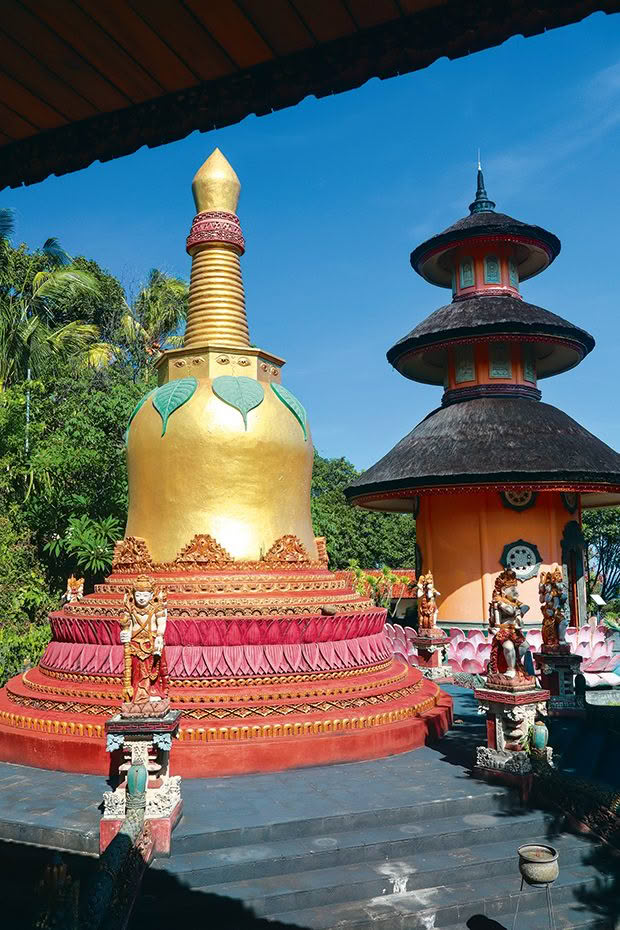
The sacred bell-shaped Stupa at Brahma Vihara Arama contains private objects belonging to Dalai Lama XIV, who visited the temple in 1982.
Shaking their heads, our guide Moldi and Captain Denang tell us many tourists that visit can’t swim, and despite their safety concerns, the area is getting busier each day, thanks to its new Instagram and TikTok fame.
We snorkel far from this madding crowd to the quieter waters off Gili Trawangan, where the only mobs are heavenly schools of angelfish and turtles who glide through the water with a posse of butterflyfish taking turns nibbling parasites off their backs.
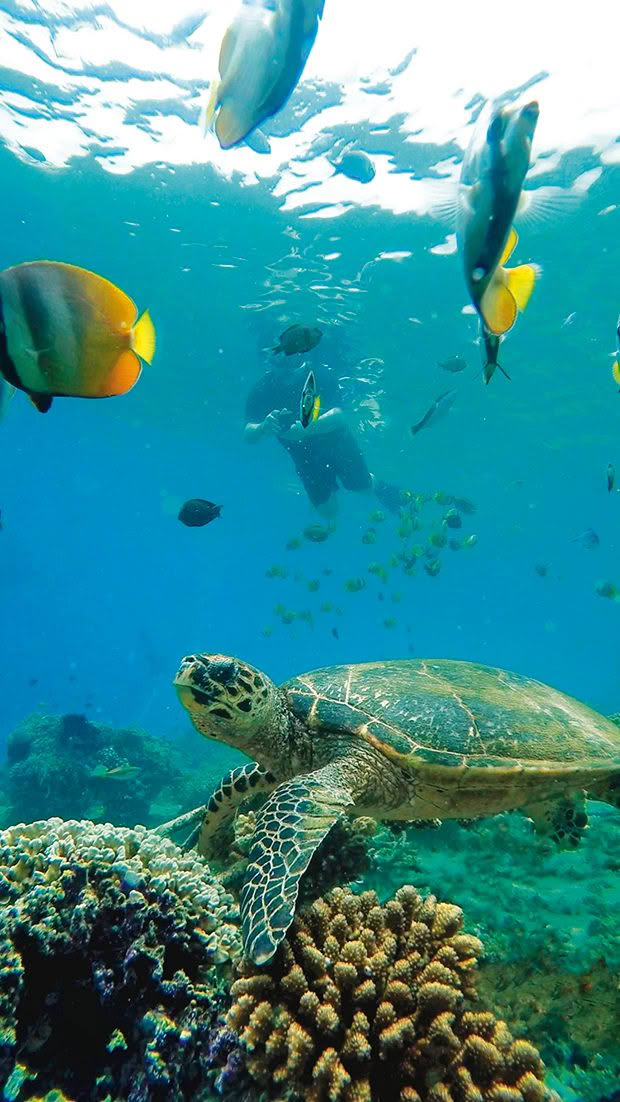
Snorkellers find turtles and tropical fish in the Gili Islands, three small islands off the northwest coast of Lombok. Conservation efforts include baby corals planted on artificial reefs and a turtle sanctuary on Gili Meno, which gives baby turtles a better chance at life before they are released into the sea.
Back on the cruise ship, there are fever-pitch levels of excitement on deck five: only one corner left to go of the world map jigsaw puzzle! Call me a nerd, but the camaraderie surrounding this 1000-plus-piece puzzle is delightful. Passengers stop by the table on their way to the atrium to place a few pieces or cheer on other puzzled jigsaw-ees.
We proudly contribute to the team effort to complete parts of Australia, New Zealand and a few problematic blue parts of the Pacific Ocean. At the evening show in the Constellation Theatre, puzzle bamboozlement turns to acrobatic astonishment watching juggling circus duo Cameo Rascale.

The Bask Nest underwater statue off the coast of Gili Meno is now a popular tourism spot — to avoid the crowds, visit in the morning.
“Who’s ready to slay a dragon?” jokes the eternally smiley Tammy Heath, the social hostess and unofficial first lady of Seven Seas Explorer. Overnight, we’ve sailed into Komodo National Park, home to the endangered komodo dragons, and of course, there won’t be any slaying taking place in this UNESCO World Heritage site.
Tender boats take us ashore to the parched landscape, the only endemic home to the world’s largest lizard. Since its heritage status in 1991, the only way to visit the protected island is by a guided tour to protect the 5000 wild komodos and their prey.
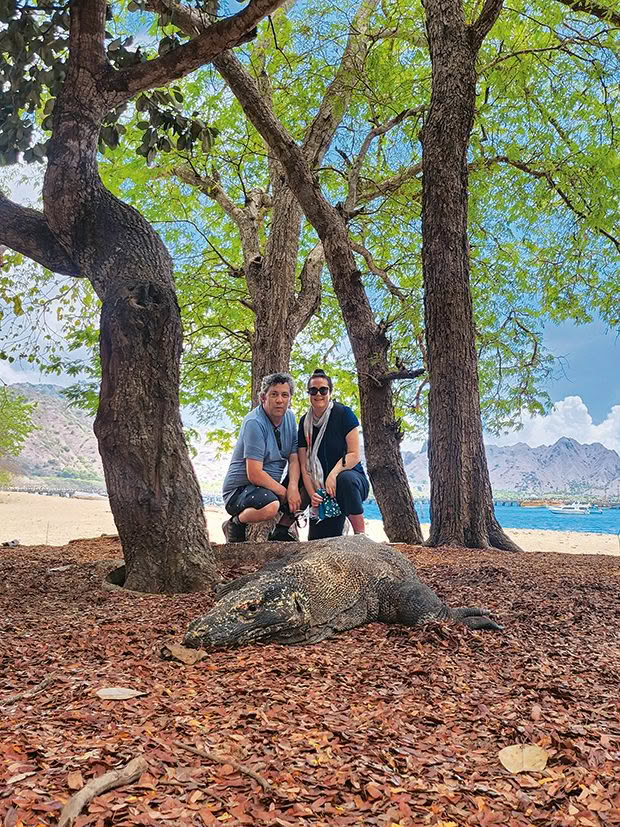
Forced perspective makes Emma and Andrew appear like they are just a few centimetres behind a komodo dragon in Indonesia’s Komodo National Park, but in reality, they were (thankfully) five metres behind the beast, with guides on hand.
Our guide, Abdi, is armed with an alarmingly flimsy-looking pole to ward off errant dragons known to attack and kill humans. The dragons we see are in a lounge-lizard state of mind, sunbathing on the red earth, disinterested in us humans. But beware the sleeping dragon, any misguided impressions that these animals are harmless are quashed when we hear about the infamous “last tour” back on board the ship.
Depending on who you talk to, the guests on the last tour had either the best or worst experience when a komodo sprung from its slumber to kill a wild deer. It’s unsafe to cross the path of a komodo while it’s eating, and the group had to hide in the bushes with hands clasped over their mouths to contain their gasps while the dragon pulled out the deer’s entrails. Their late return delayed the ship’s departure.
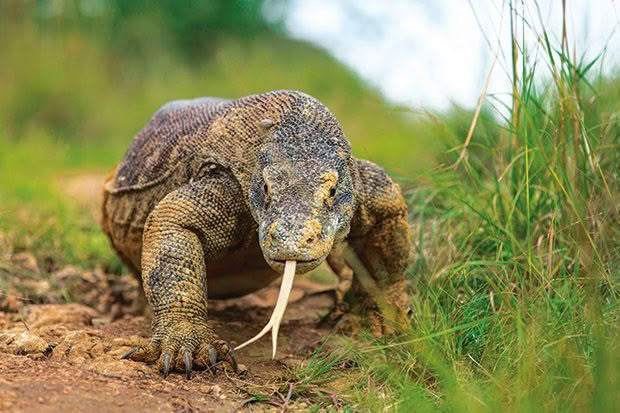
Our day in the Timor Sea between Indonesia and Darwin is a chance to lap up the splendour of the ship. We take in the sea air while sipping on Seabreeze cocktails for a “Cool by the Pool” band performance, then fail miserably at a pop quiz in the Observer Lounge (let’s blame the cocktails) and gaze into the silver ocean void.
When we arrive in Darwin, the dry, red landscape feels similar to Komodo National Park, and I realise how arbitrary national borders sometimes are. We pass mango plantations and sooty-bottomed eucalyptus trees, the result of a recent flash fire, in Darwin’s Territory Wildlife Park.

This 635-hectare park has a little train taking us around the different wildlife habitats of flora and fauna of Australia’s Top End and to meet the locals: agile wallabies, freshwater crocs, northern brown bandicoot and devious galahs (who are not deserving of their reputation for being a bit thick). I even stay poker-faced when meeting Lady Gaga, an albino darwin carpet python. We trade wildlife photos with our shipmates on the ride back to the port.
Steel, marble and chandeliers aside, one of the cleverest pieces of engineering aboard Seven Seas Explorer must be how it’s designed to help foster friendships.
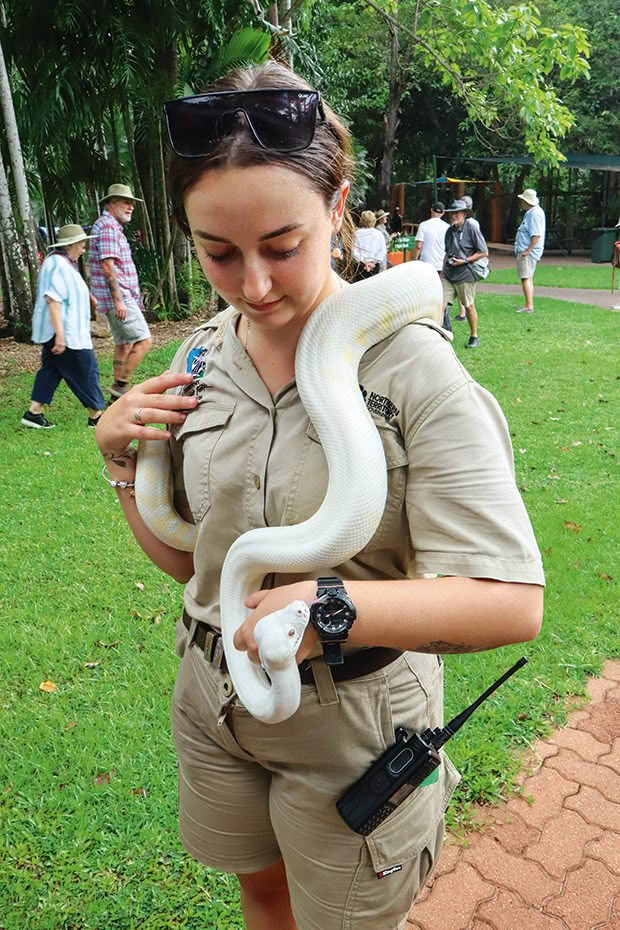
We’ve bantered about books at a barbecue in Bali with Tim and Danuta, a cyber-security specialist and English professor from Maryland in the United States. We’ve partied in the passageway with Rosemary, a veterinary chiropractor from Sedona, during the ship’s Block Party (a Regent ship ritual where guests share champagne and canapes in the corridor with passengers in neighbouring rooms).
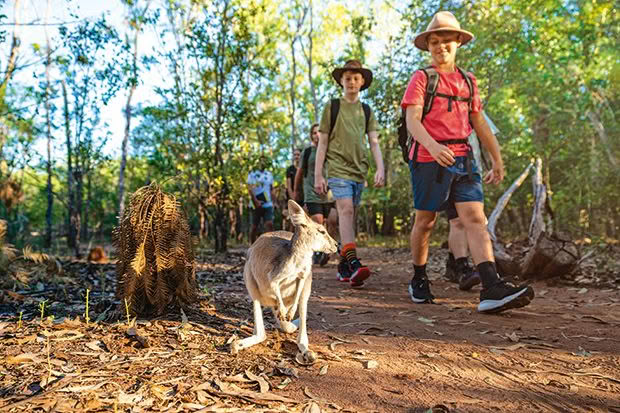
At a shared table dinner at Pacific Rim restaurant, we talk wine and politics with seasoned cruisers Ted and Maria from the Napa Valley (who wisely recommend the softshell crab tempura and pork and shrimp siu mai). We enjoy beers with our Melbourne buds Craig and Erin on our final night at a Buddy Holly impersonator show. Rave On, we hum on our way to the airport as we rave on about our adventures.
CRUISING
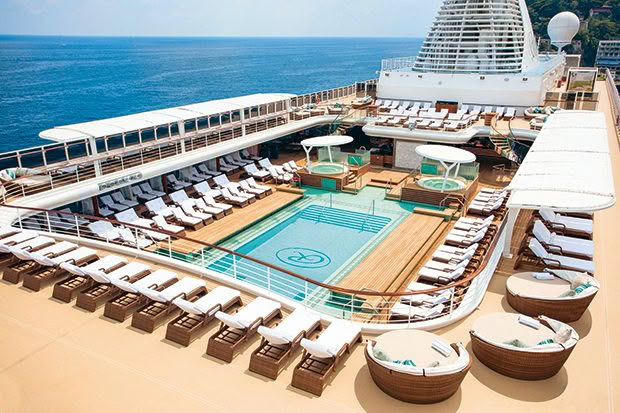
Regent Seven Seas Cruises’ Aussie Exploration sailing aboard Seven Seas Explorer for 16 nights, with up to 37 shore excursions, is priced from $22,950 for a deluxe veranda suite G2, rssc.com.
Where to eat on board: The food on board is exceptional. The La Veranda buffet serves endless options, and at the main dining room, Compass Rose, the tables are set with Versace plates and serve always-available bistro classics such as lobster tail and fillet minion, as well as a daily special menu. The three speciality restaurants are included in the fare but require booking ahead, although it’s easy to get a table if you don’t mind sharing with other guests. At Prime 7, the New York-style steakhouse, the strip steak and creamed spinach side was top-notch, and a porterhouse steak nearly the size of a plate posed a challenge even for meat- loving Andrew, who proudly rose to the occasion. We revisited Prime 7 another night, especially for the caramel popcorn sundae.
Asian fusion at Pacific Rim was popular with the Aussies on board, with Japanese-style sushi, Cantonese dumplings, Thai curries and New Zealand sauv blancs. Chartreuse, a French restaurant serves Parisian classics such as filet de canard and escargots à l’ail façon in a chic dining setting.
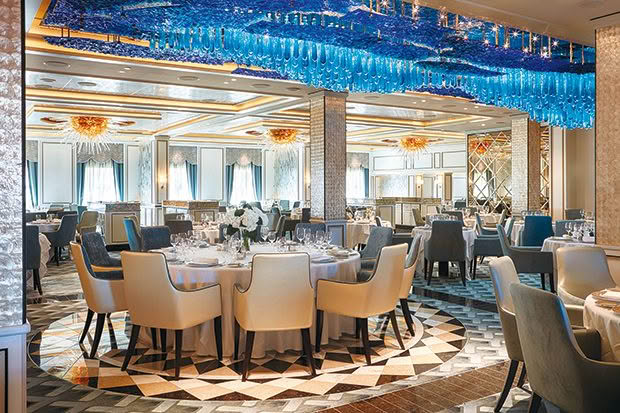
New to Regent: The newest ship on the Regent’s fleet, Seven Seas Grandeur, was launched in 2023 with rave reviews. This year, the ship crosses the Atlantic from New York for a series of luxury European cruises, including Majesty Along the Amalfi Coast and Ancient Lands and Historic Sites (Athens to Istanbul).
Love this story? Subscribe now!
 This article first appeared in NZ Life & Leisure Magazine.
This article first appeared in NZ Life & Leisure Magazine.
